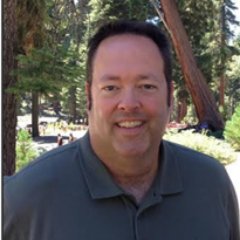

Our CEO Joseph Forbes began building Causam eXchange in 2014. Working in stealth mode, he and a small team of experienced technology executives began by building a deep foundation in intellectual property, and then moved to the development of the software platform.
Pretending to be hockey fans for a brief second, they followed the advice of NHL legend, Wayne Gretzky and prepared for where the puck is going, not where the market saw it years ago.
After amassing 100+ patents and patents pending, it is time to tell his story, which is also our story as a company.
So, let’s dive in…
Describe Causam eXchange in a few sentences. And, yes, we know this is borderline torture for you, since you are accustomed to writing 100-page business plans and incredibly nuanced patent applications.
That’s OK. I’m a glutton for punishment. I heard that it builds character.
On one hand, Causam eXchange is complicated, with blockchain, ethereum, complex algorithms, and smart contracts.
On the other hand, it is simple: We are a software and technology platform that connects buyers and sellers of power at the distribution level, facilitating near real-time financial transactions, similar to how VisaNet connects businesses, customers, and banks in non-power transactions all the time.
We enable buyers to have greater choice of power source, and sellers of power to have more ways to monetize their generation assets. Said differently, what does it matter to have all of these proven innovations available on the grid — e.g., storage, rooftop solar, electric vehicles, commercial microgrids, net zero buildings, and unique rate structures — if you can’t get paid when you deploy them?
And we do all of this by interfacing with existing power markets, especially in deregulated Independent System Operator (ISO) and Regional Transmission Organization (RTO) markets, and harnessing the power of ethereum blockchain technology. We do not depend on utility approval, but we also respect that they have an important role to play.
Having built and sold multiple companies, you did not need to start Causam eXchange. So why are doing it?
I hear you. I’ve been asked that before.
But I have to tell you — this is the biggest opportunity that I have seen in my career. And importantly, this is the right time, where a giant industry can be radically changed through a technology that I’m developing. It’s even bigger than what I went through building companies in the telecom sector during its massive disruption.
We sit at the middle of two massive global trends: 1) dramatic changes to make the $6 trillion-dollar energy industry more digital, distributed, connected, and renewable, and 2) the disintermediation of conventional financial settlements via digital currencies and blockchain technology.
We literally have the ability to protect the power grid from itself, by enabling all these smaller distributed generation assets to strengthen the system, and decrease power costs through more efficient transactions and dramatic reductions in the cost of renewable energy.Big picture, through lower transaction costs in micro-transactions, we hope that someday our technology can be used to ultimately play a role in bringing clean power to the more than 2 billion people who lack dependable electricity around the world.
So, Causam eXchange is a “change the world” kind of opportunity. You don’t get many of these chances in your lifetime. And when you do, you have to leap.
How does your work as an entrepreneur and executive in the telecom sector relate to Causam eXchange? Is this déjà vu? If so, what is the writing on the wall for the 800-pound gorillas?
In my view, the electric power sector is at exactly the same place and time as the telecom industry, which began its decoupling and disruption starting in 1984 and continuing through today.
Looking back, in 1984, when Bell operating system was decoupled and “Baby Bells” were created, the monopoly AT&T hired a consulting firm to determine the viability of wireless cellular radio as a consumer product. The genius answer was that no more than 1 million units would be sold. Therefore, AT&T chose to be in the long distance business. Today that business is free, and AT&T has been bought and sold three times. The wireline business is in decline, while wireless business has eclipsed it. Fun statistic to drive the point home: Today, there are more than 2 billion smartphones around the world.
The lesson is that industry giants have a difficult time imagining new paradigms eating their lunch.
Very similar driving forces are at play — e.g., changing regulatory factors, the realization that only a few benefit in monopoly structures, the movement from analog to secure internet protocol architectures, and the understanding that data sharing leads to great innovation. In addition, solar power costs have fallen ~80% in the last decade or so, energy storage costs have fallen ~70% in the last 6-7 years, electric vehicles are becoming mainstream with 100+ EV models on the road in two years, and technology has advanced to allow for management of large quantities of real-time data and communication. The 800-pound gorillas (I mean that in the most loving sense) in the power sector are not prepared to accept or address these megatrends. But we are.
Causam eXchange is located in the South, which is not quite the mecca of fintech and sustainable technology innovation. Why should people ignore the Southern stereotypes?
Well…
(Yes, that word went for a full two syllables. If you could hear me talk right now, I’d be putting on my thickest Southern accent possible.)
In fact, there are more companies in the smart grid and next generation power grid in North Carolina’s Research Triangle Park (RTP) than most anywhere else in the world. Plus, Charlotte, just to our South is a national financial center.
Moreover, the concentration of graduate degrees in this metro is often ranked as among the highest in the U.S. Our business requires deep, innovative thinking, and RTP offers it in droves. In addition, the cost of living here is far lower than the Bay Area or New York City, and we often win awards as a “top 10 best places to live in America.” As such, our ability to attract and retain talent is top notch.
Your dad was a Methodist preacher. Aside from his influence on your (ahem…insert clearing of throat) colorful Southern colloquialisms, how does that relate to your work as a CEO of Causam eXchange? (And we know it does…)
You’re right. But to hear my “colorful Southern colloquialisms,” people have to meet me face-to-face. Talking about the lessons to learn from livestock is lost in written form.
One of the benefits of being son of minister is about a moral backbone. I was taught, in no uncertain terms, that there is no lying, you do what you say you’re going to do, you honor people by giving them the opportunity to shine, and you have the humility to hire people smarter than you are and give them credit for what they do. I hope that this makes Causam eXchange a trusted partner in business and place where professionals thrive.
In addition, I learned the skill of telling complex stories to a wide audience of non-experts in plain English. One way I do this is by describing what we’re doing in story form instead of coming across as “being slick.” One thing is for sure: I’m not slick.
You have prided yourself on being a forward-looking contrarian throughout your career. What are you seeing that others are not? How is Causam eXchange not just another trend follower?
I’ve been fortunate to “see around corners” for most of my career. The area of advanced financial settlement is now coming into vogue, but we’ve been at this for about five years.
As the Country Western song goes, “I was Country when Country wasn’t cool.” We’ve been building, patenting, and testing real-time transactional architecture in the energy sector for many years. We took the path of having a product protected by intellectual property and staying in stealth mode, rather than having pretty website and fancy marketing without any of the above.
The power sector vendors have a reputation for selling products that they do not have, and building it after they have sold it. We’re not going to do that.
Some skeptics might say that Causam eXchange is ahead of its time, and the market is not ready for such disruption (as though markets are every “ready” for disruption). Does Causam work in today’s reality? How is it positioned to capitalize on a more distributed energy future?
If you do not believe that the electric power grid — due to regulatory, technological, and consumer drives — is becoming more distributed, digital, connected, and renewable, with more action at the distribution level, where real-time data does not matter, and supply-side juggernauts like renewables, storage, and electric vehicles are anomalies, then yes, we’re early.
However, if you believe that all of these postulates above are true, then no, we are just in time. In fact, we might be a necessity for these trends to reach beyond low-hanging fruit. We are an enabling technology — our ability to manage financial transactions in real-time, and handle the interface between digital currency-based blockchain networks and the convention grid, helps distributed assets to achieve greater penetration.
Our solution works today, with existing market infrastructure. We don’t believe there is a need to replace it with new isolated blockchain networks, or with new vendor-specific hardware as a gating channel.
We are believers in the use of blockchain to create unique contracts and connect willing buyers and sellers via payments using digital or fiat (conventional) currencies. However, we also believe that the trends of companies raising millions of dollars in ICO (Initial Coin Offerings) with their own coins for future payment of goods and services is fundamentally flawed.
The energy landscape is changing quickly, perhaps too quickly for some (you know of whom we speak). With Causam eXchange entering the picture, who should be excited, and who should be worried?
Anyone that wants to take charge and have more freedom of choice regarding how they make, consume, and sell energy should be very excited.
However, anybody that intends to hang on to a centralized “big iron” infrastructure, or existing companies whose entire business plan is to arbitrage commodity energy or create no value in electric power grid, should be worried.
Any vendor that believes they can continue to create proprietary products that are not interoperable or have capability to share data for the new distributed grid do not have a long-term future in it.
So, what type of customers can Causam eXchange help the most?
In the first phase, we are focused on two customers types.
The first customer type is owners of buildings, especially multiple buildings and those with multiple tenants, and those in deregulated electricity markets. We can help them become virtual power plants, increase building value by increasing their net operating income (NOI), and attract/retain tenants who care about more environmentally friendly buildings. We do this by handling the accounting, back office, and financial settlements of hundreds of micro-transactions in near real-time involving behind-the-meter resources like solar, energy storage, and backup generators, as well as the conventional utility grid.
The second customer type is retail electric providers. We help improve their business by reducing the length of time required for financial settlements, lowering transaction costs, reducing working capital, increasing operating margins, integrating renewable energy and demand response, and ultimately, creating greater differentiation in a commoditized market, thereby reducing customer acquisition costs and improving retention customers long term.
In the second phase, we hope to work with utilities more broadly and play role in handling financial settlements at the transmission level of the power grid, and leverage our technology to support the proliferation of distributed assets to the world’s billions of lack energy access.
